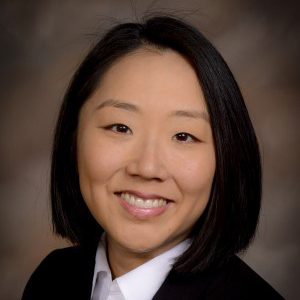Explore Related Nursing Specialties
How to Become a Women’s Health Nurse Practitioner
Women’s Health NP At-a-Glance
What you’ll do: Provide healthcare to women of all ages, often serving as their main provider.
Degree you’ll need: Master of Science in Nursing (MSN)
Certification: Women’s Health Care Nurse Practitioner certification
Median annual salary: $126,260
Women’s health nurse practitioners are primary care providers who focus on women’s health, such as gynecology, obstetrics, and reproductive health. They provide direct patient care, similarly to doctors, to perform evaluations, diagnose illnesses, and treat people. The job outlook for nurse practitioners is outstanding: Expect to see a 44.5% increase in growth over the next decade says the U.S. Bureau of Labor Statistics.
In this Article
How to Become a WHNP | Job Description | Licenses and Certification | Salary | Career Outlook | Resources
How to Become a Women’s Health Nurse Practitioner
Women’s health nurse practitioners (WHNPs) provide vital healthcare services to women of all ages. Many people get care from nurse practitioners out of convenience, preference, or because there’s a shortage of physicians where they live.
“We take caring for our patients very seriously,” says Rachelle Nurse, PhD, WHN-BC, ANP, a women’s health nurse practitioner and associate professor at Texas Woman’s University. “Our role as an NP is to assess, develop a plan of care, diagnose, treat, and prescribe.”
The role of an NP is to assess, develop a plan of care, diagnose, treat, and prescribe.
To become a nurse practitioner, you’ll generally start with a four-year Bachelor of Science in Nursing (BSN) degree. Some NP programs accept an Associate Degree in Nursing (ADN), but may require additional courses or other prerequisites. You’ll also need your registered nurse (RN) license, which you earn after finishing a recognized nursing program and passing the NCLEX exam administered by the National Council of State Boards of Nursing (NCSBN).
Next, you’ll apply to and complete a Master of Science in Nursing (MSN) degree program, which includes both didactic and clinical work. This degree can take between 18 months and three years, depending on the school you attend.
When you begin your nurse practitioner education, you’ll choose a specialty; in this case, women’s health. “We women’s health nurse practitioners have the ability to home in on our specialty, to be the expert in obstetrics and gynecology,” Nurse says. “You’ll graduate with the advanced skillset to do this job.”
When you begin your nurse practitioner education, you’ll choose a specialty such as women’s health.
The field is gradually moving toward requiring a Doctor of Nursing Practice (DNP). “There’s a push toward requiring a DNP, but we’re not there yet,” Nurse says. “Requiring a master’s degree is still the norm.”
What Do Women’s Health Nurse Practitioners Do?
“We provide evidence-based, holistic care for women and people with diverse gender identities,” Nurse says. Women’s health NPs may also provide care to patients’ families. While they are most often seen for obstetric and gynecological care, women’s health NPs can cover other specialties, too. They can include infertility and even plastic surgery.
“We often act as a patient’s primary care (provider),” Nurse says. Women’s health NPs evaluate, identify, diagnose, and treat concerns that impact women’s health. Unlike other nursing professions, women’s health NPs can prescribe medication, like antibiotics for a urinary tract infection.
Their duties cover a wide range of care, including:
WHNPs can care for women and people with diverse gender identities of all ages, throughout their lives.
“One thing I love about being a women’s health provider is the continuity of care,” says Jennifer Woo, PhD, CNM, WHNP, FACNM, an associate professor who teaches nursing at Texas Woman’s University. “I also love caring not only for the individual, but for their families and communities.”
Licenses and Certifications
To begin practicing, you’ll need your Advanced Practice Registered Nurse (APRN) license, which you need to qualify for the WHNP exam. (Nurse practitioners are one type of APRN.)
To demonstrate your specialty, you’ll take and pass the WHNP exam from the National Certification Corporation (NCC). The computer-based exam covers the fundamental knowledge and skills you’ll need to provide women’s healthcare as an NP. The test covers gynecology, obstetrics, pharmacology, primary care, and other topics you covered in your nursing coursework and clinicals.
Once you pass, the NCC awards you the Women’s Health Care Nurse Practitioner certification (WHNP-BC). You do not need additional certifications to work as a women’s health NP, but these optional certs may advance your career, depending on your ambitions and where you work:
Registered Diagnostic Medical Sonographer (RDMS) Certification
Awarded by: American Registry for Diagnostic Medical Sonography
Women’s health-related applications: Sonography-aided examinations for breast, obstetrics, and gynecology, and fetal echocardiography
Who should earn this certification: WHNPs who will regularly use sonography in their practice, such as those WHNPs who work in a rural clinic where medical imaging centers are not easily accessible. “It would be really helpful and useful to have that extra certification if you’re a rural provider,” says Woo.
Surgical First Assist Certification
Awarded by: National Institute of First Assisting (NIFA) or National Board of Surgical Technology and Surgical Assisting (NBSTSA)
Women’s health-related applications: Primary assistance in obstetric and gynecological procedures and surgeries, such as cesarean sections
Who should earn this certification: WHNPs who work in inpatient settings and want to be involved in surgery. “It’s a hugely marketable skill,” Woo says.
Where You’ll Work
Women’s health nurse practitioners are most likely to work in group or individual medical care offices. Other workplaces can include:
- Their own individual practices or in partnership with other providers
- Healthcare organizations
- Hospitals
- Standalone specialty clinics such as a fertility or OB/GYN clinic
- Nonprofit or public organizations that provide family planning and women’s healthcare services
“There’s diversity in how we work as nurse practitioners,” and that can depend on where you work, Nurse explains. For example, as she is a faculty member, most of her time practicing involves seeing patients directly. Other WHNPs may spend more time on paperwork, administrative tasks, or managing others healthcare workers.
WHNPs may also see patients via telehealth. While many concerns cannot be addressed virtually, some providers offer advice or determine if a patient needs to be seen in person via a remote appointment.
Salary
Nurse practitioners earn a median salary of $126,260 annually, according to the U.S. Bureau of Labor Statistics (BLS). This median includes NPs of all specialties, including WHNPs. You can research median annual salaries by state here:
A WHNP’s salary is generally on par with other nurse practitioners, but income can still vary by geography and employer. As a general rule, WHNPs working in a hospital earn more than those in outpatient settings, Woo explains.
In addition, WHNPs who already have women’s health-related nursing skills (such as years of working on the labor and delivery floor as an RN) will start out earning more than someone whose hands-on experience is limited to clinicals.
Finally, additional certifications may impact your salary. A certification such as a surgical first assist means you can assist in C-sections, for example, and your income will likely reflect that specialty.
Career Outlook
The growth in demand for nurse practitioners is astounding. The BLS projects a 44.5% increase in demand for NPs through 2032. In fact, nurse practitioner is the fourth-fastest growing career in the U.S., according to the BLS.
The job of nurse practitioner is the fourth-fastest growing career in the U.S.
Why? The need for women’s healthcare exceeds the availability of providers. Many women do not have access to a provider for primary and reproductive care, in part because there are insufficient numbers of physicians, including OB/GYNs, in some parts of the country.
Hiring a WHNP to provide gynecological and obstetrical care is a good option for healthcare settings for several reasons. First, the education required to become a WHNP is significantly shorter than that to become an OB/GYN, so WHNPs can become trained (and ready for work) more quickly. Related to that, salaries of WHNPs are lower than what an OB/GYN typically earns. That is an attractive alternative for healthcare agencies without large budgets.
The high demand for WHNPs also stems from a trend of wanting more specialized care from nurse practitioners, Woo explains. “WHNPs can fill gaps in access because of their specialized training,” she says. “Their training goes much deeper than, say, a family nurse practitioner (FNP). That means women’s health nurse practitioners can provide care for higher-risk patients.”
Demand for this role is particularly high in rural settings and communities that have high rates of maternal mortality and morbidity, Woo adds.
“One of my goals is to inspire nurses to focus on women’s health and go on to be providers,” Woo says.
Professional Resources
American Association of Nurse Practitioners (AANP) is a community and advocacy organization for NPs, including WHNPs.
Nurse Practitioners in Women’s Health (NPWN) is a professional organization specific to WHNPs. It advocates for gender health equity and provides continuing education to WHNPs.

With professional insight from:

Rachelle Nurse, PhD, WHN-BC, ANP
Associate Professor, Texas Woman’s University

Jennifer Woo, PhD, CNM, WHNP, FACNM
Associate Professor, Texas Woman’s University


